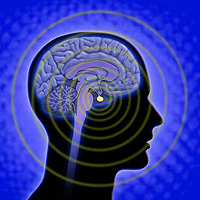Article
Pituitary Adenomas Are Often Painful
Author(s):
Bodily pain and headache are highly prevalent in pituitary disease, making pain screening and therapy an important part of the work-up for these patients.

Pituitary adenomas are relatively common intracranial neoplasms, and may present with visual field defects (classically bitemporal hemianopsia) if the tumor compresses the optic nerve. The tumor can also cause structural and functional aberrations that cause pain, typically headache. Patients who have headache usually report steady bifrontal or unilateral frontal aching. Occasionally, the pain localizes in the mid-face, either because the second division of the trigeminal nerve is involved, or the patient develops sinusitis.
A study that examines pain in conjunction with pituitary adenoma appears in the August 2014 issue of the European Journal of Endocrinology. The researchers set out to differentiate the types of pain experienced by patients with pituitary disease.
Their cross-sectional study included 278 patients with pituitary disease (n=81 acromegaly; n=45 Cushing's disease; n=92 prolactinoma; n=60 non-functioning pituitary adenoma). Employing validated questionnaires, they sorted patients’ pain into two classes (nociceptive versus neuropathic pain). They also assessed pain severity, quality, duration, and location.
Approximately equal numbers of patients experienced bodily pain (n=180, 65%) and headache (n=178, 64%). Patients diagnosed with adrenocorticotropic adenomas had the highest rates of pain, with 76% reporting pain. Sixty-five percent of patients reported deep pain, and 8.3% of patients reported surface pain.
Approximately 80% of patients reported a nociceptive pain component to their pain. Those who reported neuropathic pain were more likely to also have depression and impaired quality of life.
Although the majority of patients had disease-related headaches, 72% of them were able to continue to function normally. The researchers looked at a number of modifiable factors and did not identify any that were associated with higher or lower rates of headache. Headache occurred at about the same rate in all subgroups. They postulate that tumor activity, cavernous sinus invasion precipitating trigeminal nerve activity, and predisposition to pain contribute to each patient’s experience.
The authors remind endocrinologists to assess pain during patients’ diagnostic and therapeutic work-up. If pain is present, it requires appropriate treatment.




